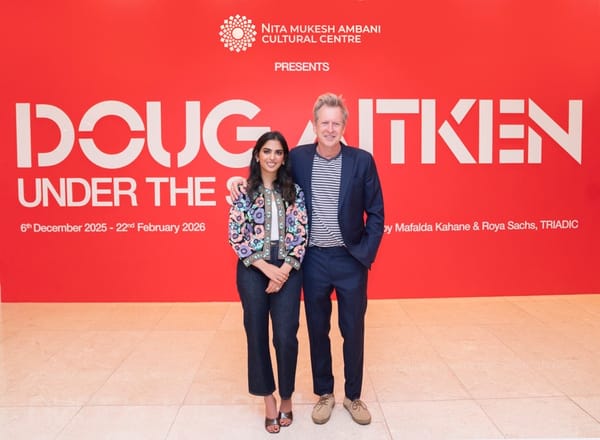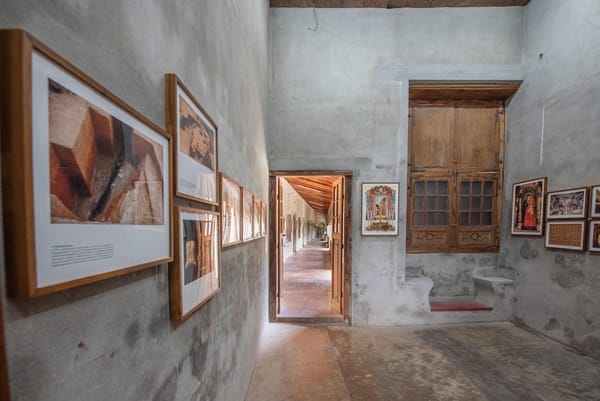The Rise of AI in Contemporary Art: Creativity or Code?
As AI reshapes contemporary art, the line between human creativity and machine-generated works blurs. Can algorithms truly create art, or are they merely tools for expanding artistic boundaries?

In recent years, artificial intelligence (AI) has infiltrated various sectors, ranging from medicine to finance, and has sparked a transformative debate in the world of art. Artists, curators, and critics are all grappling with the role AI should play in the creation of contemporary artworks. From AI-generated paintings to music composed by machine learning algorithms, the question remains: does AI represent the future of creativity, or is it merely a code mimicking human expression?
The growing presence of AI in art has brought with it a new discourse about the nature of creativity, the role of the artist, and the implications for the art market. In this article, we will delve into the ways AI is reshaping the boundaries of what we consider art, explore the ethical and philosophical debates, and hear from both advocates and skeptics of this technology.
The Mechanics Behind AI Art: How Does It Work?
To understand the impact AI has on art, it is essential to grasp how this technology functions. AI-generated art often relies on machine learning, a type of AI where algorithms learn from vast datasets to make decisions or generate new outputs. For instance, neural networks can be trained on thousands of images, learning patterns, textures, and techniques from historical paintings, and then producing completely new works based on that data. These networks do not merely copy or reimagine past works; they generate unique creations using a mathematical process, which often results in surprising and sometimes stunning visual compositions.
Some of the more prominent tools being used in the art community include DeepDream, a Google project designed to analyze images and turn them into dream-like visuals, and generative adversarial networks (GANs), which create new data (in this case, visual art) by pitting two neural networks against each other to refine their outputs. These algorithms are also being used to create AI-generated sculptures, digital installations, and music.
Can AI Be Creative?
This is the most pressing question in the debate about AI and art: can something that is, by its nature, non-human, truly be creative?
Human creativity is often described as being tied to emotion, experience, and personal expression, traits we tend to think of as distinctly human. The use of AI in art raises the question of whether these essential qualities are necessary for creativity. Critics argue that AI merely mimics the appearance of creativity without the underlying consciousness, intent, or emotion that we associate with human artistry. The algorithm behind an AI-generated painting, after all, is incapable of feeling the emotional connection that a human artist may have to their work.
However, proponents of AI in art argue that creativity is not necessarily limited to human beings. AI offers new perspectives, capable of generating forms and concepts that might never occur to human artists. In this view, creativity is about the generation of novel ideas and forms, regardless of their origin. AI is a tool, and like the camera or the paintbrush, its creativity comes not from the machine itself but from the human hand that wields it.
Notable Examples of AI Art
Several high-profile examples of AI-generated art have garnered attention, both for their innovation and for their impact on the art market.
One of the most famous instances of AI art is Portrait of Edmond de Belamy, created by a Paris-based art collective called Obvious. The portrait, generated using a GAN trained on a dataset of classical paintings, was auctioned at Christie’s in 2018 for $432,500. The sale sent shockwaves through the art world, as it raised questions about the value of AI-generated works and whether they could truly be considered “art” in the same way as traditional paintings.
Another noteworthy artist is Mario Klingemann, a German artist who has been using AI and neural networks in his work for years. Klingemann explores how machine learning can enhance human creativity by generating unpredictable forms and patterns. He believes that AI will redefine the role of the artist, not by replacing them, but by pushing the boundaries of what’s possible in the creative process.
Additionally, AI is making strides in other mediums, such as music. Holly Herndon, an experimental musician, has incorporated AI-generated voices in her album Proto. Her AI “baby,” named Spawn, learns from human vocalists and generates original vocal patterns. Herndon describes her collaboration with Spawn as an exploration of what it means to co-create with a non-human entity.
Human Collaboration and AI as a Tool
Many artists view AI as a new tool rather than a replacement for human creativity. The use of AI does not eliminate the need for human input; rather, it enhances it. Just as artists use brushes, chisels, or cameras to express their ideas, AI can be seen as another instrument in their creative toolkit.
AI, in this sense, provides a framework for human creativity, allowing artists to push beyond their own limitations and venture into uncharted artistic territory. For example, a digital artist might use a GAN to generate patterns and forms that they then refine and interpret in their final piece. The machine’s output is just the beginning—a starting point from which the artist can craft something entirely new.
By working alongside AI, artists can engage in a collaborative process where the final product is a hybrid of human and machine input. This collaboration prompts us to reconsider the very nature of authorship and originality in art. Should the AI be credited as co-creator? Is the art still “original” if it relies on machine learning trained on existing works?
The Debate Over AI in the Art Market
The introduction of AI into the art market has sparked a debate over the value of these works. On one hand, AI-generated art has been sold at major auction houses for significant sums, as seen with Portrait of Edmond de Belamy. Some collectors and investors view these works as pioneering pieces that capture a historic moment in the evolution of art and technology.
On the other hand, critics argue that AI art lacks the personal touch that often drives the high prices in the art market. Without the artist’s hand guiding every stroke, these works are seen by some as less valuable, or even less authentic. The subjectivity of human emotion, experience, and intent—which often influences the perceived value of art—is absent in AI-generated works.
Moreover, some art critics are concerned that AI-generated art will contribute to the commodification of creativity. If an algorithm can churn out endless iterations of an artwork, does it devalue the concept of art as a unique, singular expression? This tension between reproducibility and originality will likely continue to shape the debate around AI art’s role in the market.
Ethical and Philosophical Concerns
Beyond questions of creativity and market value, AI art also raises ethical and philosophical concerns. One major issue is the dataset on which AI systems are trained. Many AI tools rely on massive datasets of existing art, raising concerns about copyright and ownership. If an AI is trained on thousands of copyrighted artworks, does it infringe on the intellectual property of the original artists?
Furthermore, the rise of AI in art raises questions about the future of human labor in the creative industries. While AI is unlikely to fully replace artists anytime soon, it could change the landscape of certain creative fields. For instance, AI-generated stock photos or music could reduce the demand for human creators in those industries, potentially leading to job displacement.
The Future of AI in Art
Looking ahead, AI is likely to become an even more prominent tool in the world of contemporary art. As AI technology continues to evolve, it will open up new possibilities for artistic expression, from virtual reality experiences to interactive installations that respond to human input in real-time.
However, the debate over AI’s role in art will likely persist. As AI-generated art becomes more commonplace, society will need to reconsider what it means to be creative, what counts as authorship, and how to assign value to works that are not solely the product of human minds.
Ultimately, the rise of AI in contemporary art is not just a technological development—it’s a philosophical shift. It challenges our understanding of what art is, who can create it, and what role human experience plays in the creative process. Whether viewed as a tool, a collaborator, or a competitor, AI is undeniably changing the landscape of art, one algorithm at a time.





